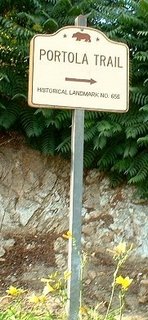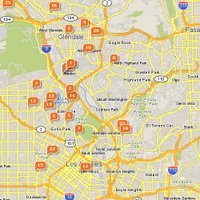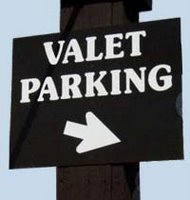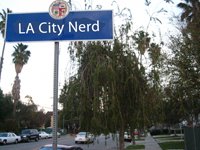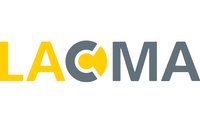
In 1924, the Los Angeles Times printed that "Los Angeles will have one of the finest art galleries in the world in the near future..."” Here we are in 2006, and the hubbub surrounding the 40th anniversary of LACMA this weekend proves that. 82 years later, that statement is true... right?
And with all the commotion about the 40th Anniversary of the County'’s independent art museum, it makes sense to take a look at the way we got here.
In 1913, the Los Angeles Museum of History, Science, and Art opened in Exposition Park after a 14-year effort by W.M. Rowen against Agriculture Park, which was a gathering place for drinking, gambling and other disgraceful activities of 100 years ago. (The Exposition Park Rose Garden was once a racetrack; notice its shape the next time you're there!) This museum housed it all until the new facility was built in 1965, which is why we celebrate this weekend!

Additionally, at the dawn of the 20th century, other public galleries were discussed, and some even built. In 1916, a site had been selected on Normal Hill (about Fifth and Grand where the State Normal School once stood at the last knoll of Bunker Hill before it leveled out) for an art gallery and concert hall. Perhaps that is why we have the Central Library there now?

In 1916, General Harrison Gray Otis deeded the property (which included his family residence) at Wilshire and Westlake to the County with the provision that it be used in the furtherance of education in the arts. It was official in January 1917 and was originally part of the County Museum, known as the The Otis Art Institute of the Los Angeles Museum of History, Science & Art (1918). It had six more name changes, and then moved in 1997 to Westchester. In recent years, LAUSD converted the orginal site of Genreal Otis's home and the Institute into an elementary school:
Charles White Elementary.
In 1927, Aline Barnsdall donated
the park bearing her family name and the structures to the City, with similar intentions to those of General Otis: to provide an accessible arts center. In the nearly 20 years that followed, Ms. Barnsdall tried to take back the property, claiming the city didn'’t keep its side of the bargain - a bargain only she was privy to. The City denied her claims & efforts to physically block entrance to the park, and she died a recluse in 1946, leaving $5,000 for her 22 cocker spaniels.
In 1957, 26,000 people attended the celebrated "The Family of Man" photography show organized by New York's Museum of Modern Art, in Barnsdall's original municipal gallery, a temporary structure designed by Frank Lloyd Wright. Later that year, the park hosted a Vincent van Gogh show and then, Norman Rockwell and Maxfield Parrish retrospectives in the mid-'60s.
The City'’s Municipal Gallery was established in the hallways of City Hall on the 3rd (& then the 6th) floor in 1928. As early as 1941, the gallery was housed in Room 351.

In 1941, the City decided to start securing the oil paintings of all former Mayors into the Municipal Art Gallery. Apparently, at that time, only half were in the collection and then locked in a separate room from the main gallery, often referred to as the morgue. Then, in April 1955, the first showing of mayoral portraits (22 of 36) was unveiled for just over 2 weeks in the Tower Gallery. The City's "Tower Gallery," the first true municipal art gallery, opened in 1951 on the top floor of Los Angeles'’ tallest building: City Hall. They claimed it to the be on the 25th Floor and attract over 27,000 people the first year. The Tower Gallery seems to have closed after 1968 (still trying to find confirmation on this one!), and it'’s permanent replacement opened in 1971 as the Municipal Art Gallery built in Barnsdell Art Park. It wouldn'’t be until 2002 that the Tower Gallery opened again as the Mayoral Gallery in the newly restored City Hall.
Praising a City exhibit in 1950, Art Critic Arthur Miller of the LA Times wrote, "“A great city like Los Angeles, if it is to sponsor art at all, should feature the best art owned or produced in its region."
So, the City has the Municipal Gallery in Barnsdell Art Park and a The County Museum on Wilshire in the Miracle Mile. City Hall has the Tower Gallery with its permanent exhibit and the rotating Bridge Gallery between City Hall & City Hall East. The City also has the Craft & Folk Art museum and over 2300 pieces (including the Mayor Portraits, furniture, and artifacts) in the City Art Collection.
In 1991, the City instituted a Percent for the Arts or Arts Development Fee, after discussions stemming from Councilman Joel Wachs in 1985. This fee would be levied to construction for commercial properties over a certain value, and then 1% would be paid for some sort of art or arts program. The intent was to beef up the CityÂ’s Art Collection, which it did. Works are also displayed throughout the City offices and Buildings of the City without a true gallery, only to improve the working environment of the employees (one of the missions of the City Art Collection).
The mission of the City Art Collection is actually three-fold:
1) to promote understanding, awareness and enrichment of the visual arts for City officials, employees, residents and visitors through public access to works of art
(2) to improve the effectiveness of government by creating a high-quality work environment
for employees and
(3) to document and preserve the artistic heritage of the City of Los Angeles.
The Art Collection acquisitions are governed by a
a policy from 1989, and it continues to review works to be accepted.
Does are city really do enough for the Arts and the public display of it? It depends how the taxpayers are impacted by the Galleries and public displays of art in the City.






